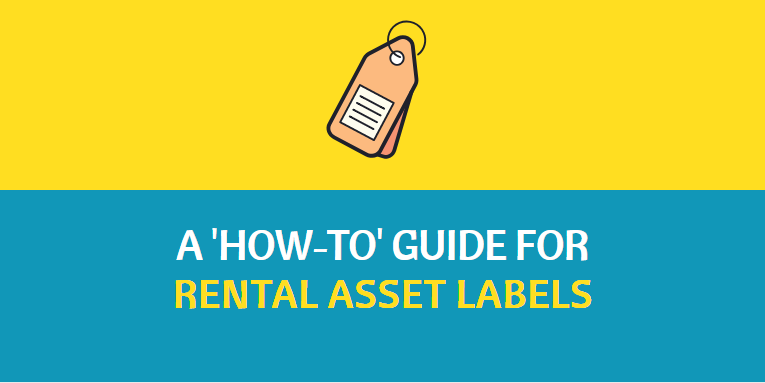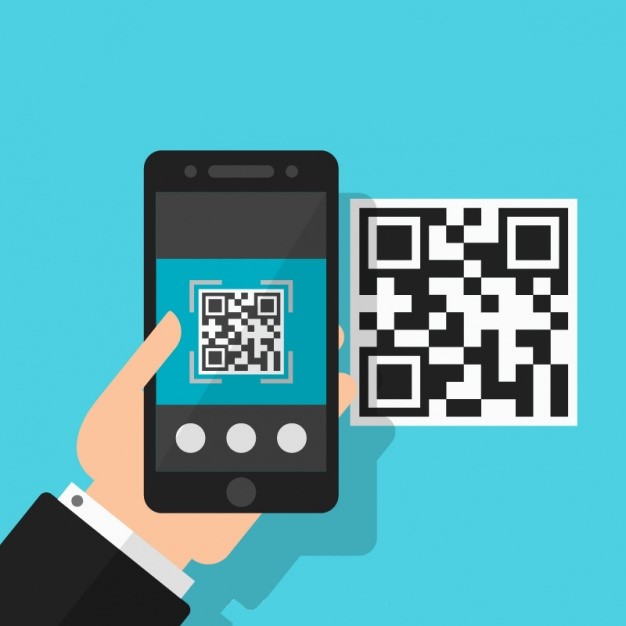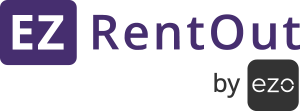
The need for rental asset labels
Most rentals inventories have a large number of products in order to cater to surging or unpredictable demand. These sizable product lines can make business optimization a difficult task.
Maybe you’re trying to decide which rentals need maintenance. Looking through your logs, you realize no one properly filed the rentals returned from servicing last week against their proper IDs. With more products under your belt, managing items becomes much more complicated. You introduce vulnerabilities into your system and end up with inefficient processes.
There really is no excuse for putting up with lost items, wasted time, and unreliable reporting. This is why any and all rental companies should be looking into better inventory management processes. So, how can this be fixed?
Companies need to understand one thing if they want to stop hunting for valuable items every other day:
Efficient inventory management starts
from the right rental asset labels.
Putting a system in place to record your inventory information will save you both time and money down the road. With many different customers and locations, tagging all of your rental assets makes them easy to track as they go in and out of your rental store.
But where to begin, you ask? Choosing the right kind of label, size, material, color, and data can all be a little overwhelming. That is why we’re about to break it down for you.
Work on a labeling strategy

The first step only requires two things – a sheet and a pen! Sit down and figure out what kind of inventory you store. Are your items rented out frequently? Are they outdoor rentals that are exposed to extreme conditions? Do you offer high-value camera gear that you cannot afford to lose? Or do you track rentals in bulk, such as for furniture or decor?
Every kind of label offers a solution to a different kind of problem. This is why you need to first and foremost identify your needs.
Choose a clean label designer software. Many rental software solutions have a built-in design feature so you can make labels using your pre-existing item data. This means you don’t have to spend extra money on a designated designer. With a built-in label designer, you don’t have to keep track of all your label template files either, as the software takes care of them from the start.
Choose the right material for your asset tag
Your asset needs will signal you towards the material you should pick. There are quite a few to choose from, so we hope you spent a lot of time on your labeling strategy!
Tamper-Evident tags: These are anti-theft tags that provide security to your gear. They are also great at preventing customers from tampering with the internal components of your equipment. Any attempts at removing the label will display a special pattern which is indicative of a security breach. These are popularly used by high-value electronic rentals.
Aluminum tags: These offer high durability and can hold their own under extremely harsh external conditions. They are the most resistant to wear and tear and should be used for expensive rentals that have a long lifespan or are exposed to extremely harsh conditions. Why not use these for your construction gear?
Foil tags: Foil tags are best for uneven surfaces and work with most material as they are highly adhesive. These are also very popular because they offer substantial durability at a lower price. Count on these to last for a long time so you don’t have to worry about losing a label. Use these for bike rentals so the tag easily adheres to the bike’s body.
Polyester tags: These tags are best for indoor use. They fair well under moderate external conditions but their appeal lies in their cost-effectiveness. You can also make visually appealing labels that sport different colors to make your rental asset labels eye-catching and easy organizable. An over-laminate offers protection to the design. These are a great option for furniture rentals.
Opt for the right size

Choosing the right size for rental asset labels is very important. If you go for a size that’s too small, your label will have poor readability. This will make it harder to scan. A size too big might be unsightly (and difficult to scan from a close distance). Here are the dimensions we recommend:
Barcodes: 1.5” by 0.5”
QR Codes: 1” by 1”
Small and portable rentals like cameras and handheld devices have very little room for chunky labels. In that case, design smaller codes in only black and white for high contrast and ensure that the printing quality is crisp. These two will give your small rental asset labels better readability.
Include the right data points
This is where you make your asset labels purposeful. The data you include on your labels will be vital in tracking rental assets. You can add whatever you’d like but here are our recommendations:
Identification Number:
All items should have an identification number on them so they can be differentiated from one another. These numbers can be intuitive and signal towards the item manufacturer or category. As an example, assign your Macbook Air laptop rental the Identification Number MAC-113.
Company Logo:
People read logos much quicker than a company name written in the same font as everything else on a label. Logos stand out and aren’t lost within the rest of the data so we suggest including these on your label. They mark a rental item as a company’s property to ward off stealing attempts, and there is a higher chance of recovering a lost item when the finder can tell who it belongs to. Think also of the added marketing boost this could add to your rental business!
Color Codes:
If you have a lot of different categories in your rental inventory, including a color code for quick sorting is a good idea. Use a green color code for non-fiction books and a yellow one for fiction, for example, so you can quickly organize them after a rental period is over. You can also use color codes for other data points, like using it to differentiate between fragile and sturdy equipment.
Other Data:
: if you operate from multiple locations, adding the item location will help ensure rentals don’t get lost between stores. Handling instructions and manufacturer names are other popular data points that are commonly added to asset labels.
Barcodes/QR Codes:
This one’s crucial! Feature either a barcode or a QR code so employees can quickly pull up all relevant rental information during check-ins and checkouts without having to spend time reading the tag. These also work great for inventory checks at the end of the month by reducing human error and speeding up processes. While barcodes have been in use for years, QR Codes are able to store a greater amount of information and can be scanned with any mobile camera.
Now that you’ve read the kinds of information to include on a label, here’s a sample we created with our label designer. It features the 5 data points we recommend:

- The QR code is roughly 1” by 1” for easy readability.
- A logo at the bottom stands out from the rest of the data points.
- The purple color here represents the “Snow Rentals” category.
- HEL-340 is the asset Identification Number.
- Fairfax is the branch location for this asset (Calypso Rentals operates in different cities).
QR codes vs. barcodes – choose the right one
A question as old as time, what should you use for your rental equipment, QR codes or barcodes? Both have their pros and cons and it really does come down to your needs. There is no one size fits all solution here. However, QR codes are preferred and recommended, because the advantages they offer trump the pros of using barcodes. Let’s go over some of the reasons why you should choose QR codes.
a) Information storage
QR codes and barcodes both store similar information. However, QR codes can hold more information because they store information both horizontally and vertically (2D), whereas barcodes only save information only horizontally (1D).
Moreover, barcodes can only represent up to 25 characters, whereas QR codes can go up to 2500. This enables you to store and easily access much more information if you opt for QR codes.
b) Ease of readability
A QR code can easily be scanned from any angle, without having to align the scanner with the code in a perfect line. That is not the case when it comes to barcodes, where you have to aim the scanner in line with the code. When you have a bulk of items to scan, you won’t have the time or the precision to aim the scanner perfectly every time.
c) Save space with smaller sizes
QR codes can be up to 10 times smaller than barcodes. The reduction in size does not affect the readability at all, so you can easily print smaller labels that still store more information than barcodes.
d) Durability
Lastly, you need a label that is readable even after some wear and tear. QR codes are more robust in this manner since they have a high error correction margin. So even if the code is a bit torn, damaged, or just covered with dirt, the code itself s perfectly readable and works fine.
However, there is one exception to the rule: cables. QR codes cannot work well on such thin and rounded surfaces, which is why you will have to opt for barcodes when it comes to cables and other such thin surfaces. It all depends on whether your company is tracking cables individually or not. Most companies prefer tracking cables in bulk, and QR codes work fine for such purposes.
Final tips for the best rental asset labels
- Attach labels at the back of equipment as opposed to the bottom so they don’t wear out too quickly.
- Always use a clean font for the data on your labels. Fonts like Helvetica are very widely used in labels.
- Don’t place the barcode or QR Code too close to the label boundary. The code might not transfer properly to your material.
- After you are done with the design, professional label providers like Avery can manufacture your labels for you. If you use a rental software, you can generate and print them out yourself!
- If you choose to print your rental asset labels in-house, simply use your office’s laser or inkjet printer! Additionally, here are some designated label printers that you can buy.
Your rental assets bring you business, nice and simple! This is why safeguarding and organizing them should be every rental business owner’s priority. We hope you’re a step closer to doing this with our rental asset label recommendations.
About EZRentOut
We are EZRentOut, a rental software designed to manage your rental items, orders, and customers – all from one platform. We also feature a built-in label designer to better manage your rental inventory.






